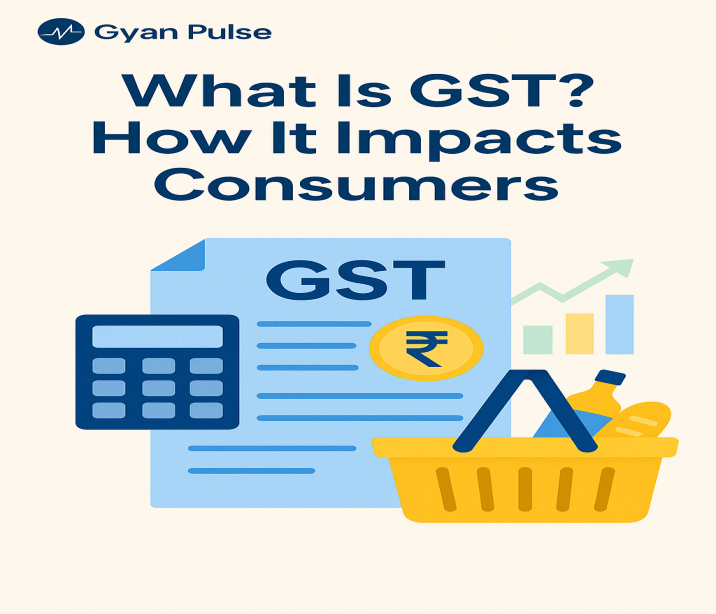What is GST? Understanding Goods and Services Tax and Its Impact on Consumers, full details 2025 updated.
What is GST? How it Impacts Consumers
The GST, or Goods and Services Tax, is one of the biggest tax changes India has ever seen. Introduced on 1st July 2017, GST replaced a complex structure of multiple indirect taxes that existed at the central and state levels. For the average consumer, GST has simplified tax understanding, but it has also changed the way we spend on goods and services.
Table of Contents
Let’s break down what GST is and how it directly affects you as a consumer.
What is GST?
GST stands for Goods and Services Tax. It’s a single tax that applies to the sale of goods and services all over India. It is designed to be a destination-based tax, meaning the tax is collected at the point of consumption rather than the point of origin.
Before GST, India had a complicated tax system with many different taxes like:
- Excise Duty
- Service Tax
- Value Added Tax (VAT)
- Central Sales Tax (CST)
- Entry Tax, Octroi, and others
GST replaced all these taxes and brought them under a single umbrella, aiming to simplify tax collection and improve compliance.
Types of GST
In India, GST is split into three main categories:
- CGST (Central GST): Charged by the central government when goods or services are sold within the same state.
- SGST (State GST): Collected by the state government on intra-state sales
- IGST (Integrated GST): Collected by the central government when goods or services are sold between different states.
For example, if you buy something within Maharashtra, both CGST and SGST will be added to the bill. But if it’s a purchase from Delhi to Maharashtra, IGST is applicable.
How Does GST Impact Consumers?
GST has had both positive and negative impacts on consumers. Here’s how:
1. Simplified Pricing
Before GST, a product might have several layers of taxes hidden in its price. Now, the entire tax is clearly visible on bills and invoices, making pricing more transparent.
2. Reduced Tax Burden on Some Items
Many essential items such as fruits, vegetables, milk, and grains are tax-free under GST. Several other products fall under the 5% tax slab, which is lower than the previous tax rates.
3. Increased Tax on Certain Services
Some services that were earlier taxed at 12% or 15% under the old regime are now taxed at 18% under GST, making them costlier for consumers. This includes restaurant dining, movie tickets, and air travel, among others.
4. Improved Supply Chain Efficiency
With the removal of state border taxes like Octroi and Entry Tax, goods now move faster and more efficiently. While this benefits businesses, consumers also gain through fresher products and better availability.
5. More Accountability
GST has helped more businesses become part of the formal, tax-paying economy. This means your bills are now more likely to be properly recorded, helping the government increase tax revenues and reduce black money.
Common GST Rates for Consumers
Here’s a snapshot of GST slabs and example items:
- 0% GST: Milk, fruits, vegetables.
- 5% GST: Tea, coffee, edible oil, medicine.
- 18% GST: Mobile phones, ready-made clothes.
- 18% GST: Restaurants, toothpaste, shampoo, internet services, Higher Education.
- 28% GST: High-end items like air conditioners, cars, and cigars are considered luxury goods.
GST and E-commerce
Online shoppers should also be aware of GST. Earlier, different states had different rules for taxing e-commerce. Now, uniform GST rules apply across India, bringing consistency and clarity in pricing, returns, and invoicing.
Final Thoughts
GST is a consumer-centric reform that aims to streamline taxation and make the economy more transparent. While it has led to some increase in costs for certain services, it has also eliminated hidden taxes and made pricing clearer for consumers.
As a buyer, always ask for a GST-compliant invoice. It helps ensure you’re not overcharged and also supports tax transparency in India.

